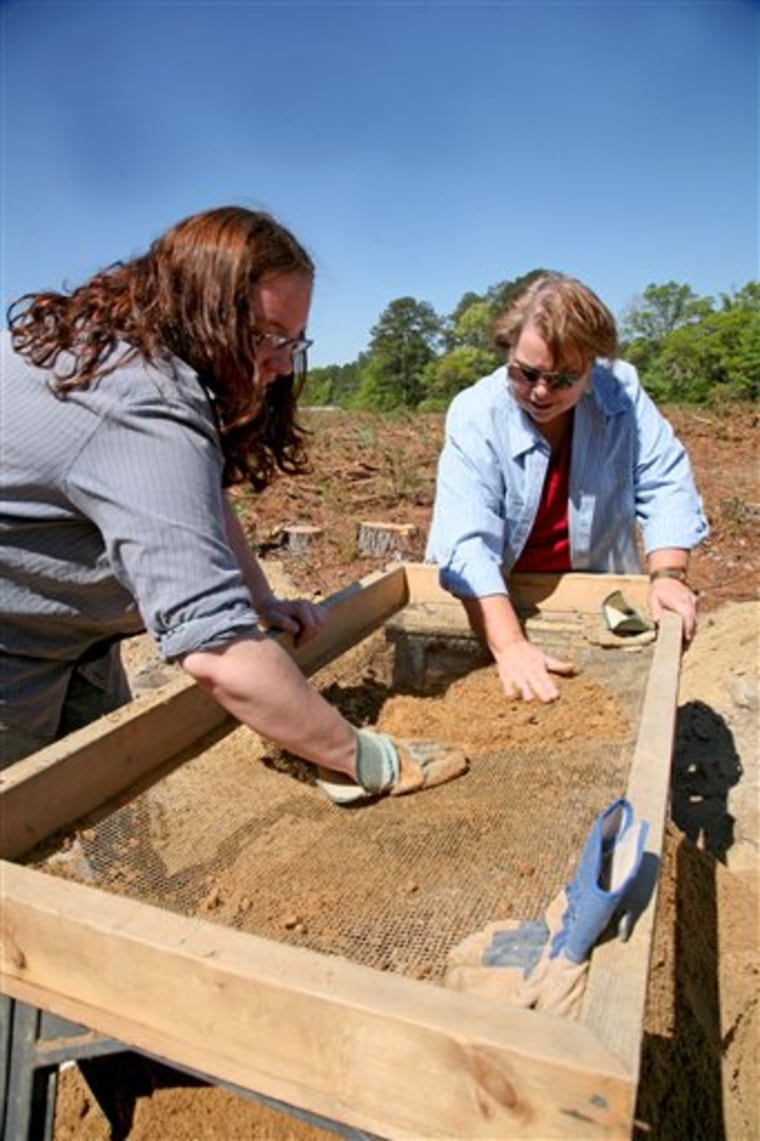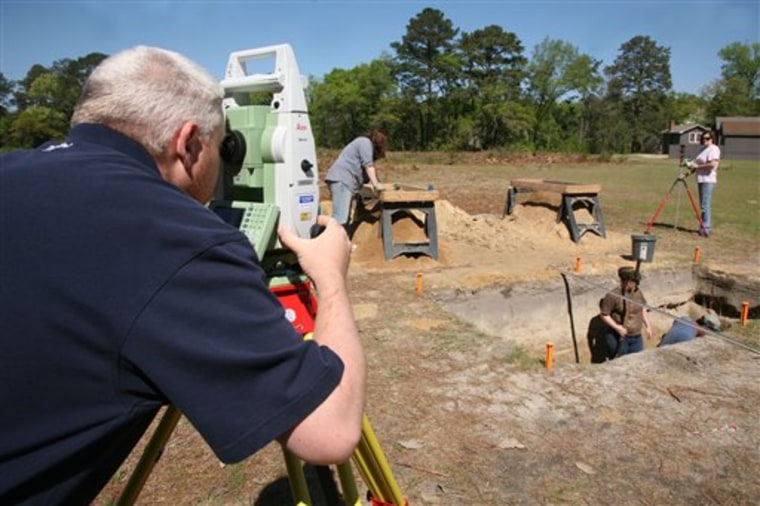Preserved for nearly 150 years, perhaps by its own obscurity, a short-lived Confederate prison camp began yielding treasures from the Civil War almost as soon as archeologists began searching for it in southeastern Georgia.
They found a corroded bronze buckle used to fasten tourniquets during amputations, a makeshift tobacco pipe with teeth marks in the stem, and a picture frame folded and kept after the daguerreotype it held was lost.
Georgia officials say the discoveries, announced Wednesday, were made by a 36-year-old graduate student at Georgia Southern University who set out to find Camp Lawton for his thesis project in archaeology.
He stunned experienced pros by not only pinpointing the site, but also unearthing rare artifacts from a prison camp known as little more than a historical footnote on the path of Gen. William T. Sherman's devasting march from Atlanta to Savannah.
"What makes Camp Lawton so unique is it's one of those little frozen moments in time, and you don't get those very often," said Dave Crass, Georgia's state archaeologist. "Most professional archaeologists who ever thought about Camp Lawton came to the implicit conclusion that, because people weren't there very long, there wouldn't be much to find."
Camp Lawton imprisoned more than 10,000 Union troops after it opened in October 1864 to replace the infamously hellish war prison at Andersonville. But it lasted barely six weeks before Sherman's army arrived in November and burned it.
The camp's brief existence made it a low priority among scholars. While known to be in or near Magnolia Springs State Park outside Millen, 50 miles south of Augusta, the camp's exact location was never verified.
That task last year fell to Georgia Southern student Kevin Chapman. The state Department of Natural Resources offered Chapman a chance to pursue his master's thesis by searching the park grounds for evidence of the 15-foot pine posts that formed Camp Lawton's stockade walls.

The work started in December. By February, Chapman, his professor and about a dozen other students had dug up stains in the dirt left by rotting wood and forming a straight line — remnants of the stockade wall.
About 1/4 mile away, on adjacent land owned by the U.S. Fish and Wildlife Service, they used a metal detector to find something else: a pre-Civil War penny about the size of a half-dollar. They were surprised nobody had beaten them to it.
"We thought, holy cow, in order for us to find an artifact like this, this site has to be undisturbed," Chapman said. "To find a Civil War site that hasn't been looted is extremely rare."
Other artifacts soon followed. The tourniquet buckle was stamped with the name of a New York company that manufactured surgical equipment in the 1860s. The clay pipe bore the name of its maker in Glasgow, Scotland.
There was a literal half-penny — a coin cut in half to buy things costing less than 1 cent — and three other coins including a German-made game token stamped with George Washington's profile.
"It illustrates a lot about the life of the prisoners," said John Derden, a history professor at East Georgia College who spent years researching Camp Lawton for an upcoming book. "The significance of Camp Lawton is it really presents in microcosm almost every aspect of the Civil War POW experience, both good and bad."
"Of course, Andersonville was a hellhole and is more important. But Andersonville is pretty archaeologically sterile."
In 1864, the Andersonville camp in southwest Georgia was overcrowded with more than 30,000 war prisoners. Thousands died from a lack of food and medicine.
The Confederate army built Camp Lawton to handle the masses Andersonville couldn't. It sprawled over 42 acres — about 1/4 mile on each side, nearly twice Andersonville's size.
Confederate Gen. John H. Winder noted Camp Lawton could easily hold at least 32,000 prisoners. "It is, I presume, the largest prison in the world," he wrote.
Prisoners arriving in October 1864 had no living quarters. They built crude huts with scraps of pine left over from construction of the stockade. Records show that Camp Lawton held 10,229 Union troops by early November. Despite the camp's brief existence, at least 685 prisoners died there.
Derden's research uncovered personal accounts by Camp Lawton's prisoners recounting how they set up a black market to sell tools and molasses candy, killed alligators for food and bribed doctors for passage on trains carrying away the sick.
Chapman and the professor overseeing his work, Sue Moore, say they've excavated just a tiny fraction of the camp's interior.
"People say, 'How long are you going to keep doing this?'" Moore said. "A short answer is years and years, because there is so much we hope to discover there."
